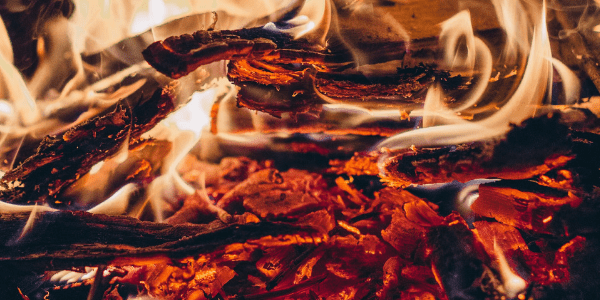
When we were kids, we were amazed by Aladdin’s blue genie voiced by the incredible Robin Williams. Who didn’t want to have those three wishes and make all their dreams come true? We all did, of course. However, when examining history, genies, or more accurately, the jinn, are not that charming, especially in pre-Islamic times.
A note of spellings and genders
First, I want to state that pre-Islamic Arabs recognized both male and female versions of these creatures. Depending on the author, you will find different spellings for the same word, so I decided to use the version used by Robert Lebling in his book Legends of the Fire Spirits.1 The author explains that “jinn” is a plural, while “jinni” is the male singular and “jinniya” a female singular. Although there are many variants, I will use these in this article and the future ones, if I happen to touch the topic of the jinn, for the sake of simplicity.
Although there are many theories about the origin of the word jinn, Irving Zeitlin2 believes it is derived from the Aramaic ginnaye, which was widely seen in Palmyrene inscriptions and is often translated as “the good and rewarding gods”. The term was used by Christians to denote pagan gods reduced to the status of demons, and was introduced into Arabic folklore only late in the pre-Islamic era.
As an curious fact, the document “Revelations of ʻAbdullah Al-Sayid Muhammad Habib” says that there were also two creatures similar to the jinn: The “hinn,” associated with air, and the “binn”, with water, both said to be extinct according to the document. I encourage the reader to read more about the topic, for it is truly interesting but deviates from the core of this article.
What are the jinn? What do they do?
Jinn (الجن) is often used as another name for demons, but that’s far from being the case. They may be similar, but you can draw the line because jinn can be both evil or good, while genuine demons are exclusively evil3 and, hence, angels are exclusively good. According to the Quran (55:15), the jinn are created out of marij min nar, which means “smokeless flame.”
These creatures were seen as spirits of the land in pre-Islamic times, “primordial spirits of the land that functioned as lesser gods beneath the rank of angels who ruled the desert wilderness and desolate places,” in words of ‘Amr-Athtar Yunajjam. They were seen as personification of natural forces, guardians of sacred places, and mediators between gods and humans, and could appear as wild animals, especially snakes, which were sacred to these beings.
When someone thought they had offended a jinn for some reason, usually because they suddenly became ill, they would throw a rock to a bush or body of water thought to be sacred to the jinn. Animal sacrifices and the worshipping of baetyls, idols through which pre-Islamic Arabs believed deities and entities would come in to interact with humans temporarily, were also common forms of honouring jinn.
Witchcraft, or sihr (سِحْر), is often associated with jinn, and so a sorcerer may summon a jinn and force them to carry out orders, usually by the aid of talismans or by satisfying the jinn, thus to make a contract. Since their lifespan is longer than a human’s, jinn are regarded as assistants of soothsayers, too, who reveal information from the past and present.

Notable Jinn
To list all notable jinn would be impossible, but among the most known are the originally ginnaye, the “good and rewarding gods.” The first one is Ashar, a north Arabian war god whose cult was popular near Palmyra in southern Syria, depicted as archer with a bow and quiver seated on a horse. The second is Sa’d, a west Arabian god of good fortune who was worshipped chiefly by the Bedouin tribe of Banu Kinãnah who would visit his idol, a large outcrop of rock on the seashore of Jeddah in the Hijaz, in order to obtain the gods’ blessing.
We also have Azazil (”Strong One of Allah/Il”) which is a lord of the jinn in Arabian and Hebrew mythology to whom goats were sacrificed in order to atone for a major sin committed by a member of the tribe. Azazil was believed to rule over mountainous and rugged desert areas that were inhospitable and were believed to be inhabited by satyr-like jinn known to the Hebrews as the se’irim, of which he was their chief.
Jabal Qaf is a legendary mountain made of green peridot located at the farthest point of the physical universe, said to be inhabited by jinn and other supernatural beings. The mountain is ruled by Jān ibn Jān, the most ancient of the jinn and from whom all jinn are descended.
You also have the Seven kings of the Jinn, who rule over the seven days of the week, mentioned by Lebling (2010, p. 87):
● Sunday: Al-Mudhib (Abu ‘Abdallah Sa’id)
● Monday: Murrah al-Abyad Abu al-Harith (Abu al-Nur)
● Tuesday: Abu Mihriz (or Abu Ya’qub) Al-Ahmar
● Wednesday: Barqan Abu al-‘Adja’yb
● Thursday: Shamhurish (al-Tayyar)
● Friday: Abu Hasan Zoba’ah (al-Abyad)
● Saturday: Abu Nuh Maimun
You might also be interested in the Qarin, an unseen creature compared to the jinn. It is the constant spiritual companion of humans. Depending on who you ask, it has either an equal chance of being good or evil, or is a completely benevolent being that acts like the Christian guardian angel, a protector and guide.
How to work with them?
If you are drawn to the jinn, I would recommend you to first have experience working with other deities and know how to cleanse and protect yourself. Remember that these creatures can be equally good and evil. It is also a good idea to work first with other pre-Islamic Arabic entities, Manat being my personal favorite, before getting started with them.
Since they are fire creatures, light a fire in their honour to show them you respect their presence, should they make it known to you, or just to ask them to do so if you believe there is one near to you. Don’t play with the fire or add anything besides wood, just let it be there, and wait for any sign, either in the flames, the smoke, or the ashes. If you get a message asking you to add something else, consult a deity, an oracle, meditate on it, and if you get positive answers, go ahead.
Also, I would suggest the use of sympathetic magic. Since animal sacrifices are out of the question for most of us, why not sculpt animals from clay? It is fun, easy, and no one will ask why you are doing it. Later, when nobody’s looking, throw the sculpture to the fire as a sacrifice to the jinn. As I said before, wait for signs of any kind.
Stones are a good option, too, mostly peridot. Have several common stones forming a pyramid or a grid, and a peridot at the top or center respectively, or have only peridots if you want, to show your respect and wishes to contact the jinn.
Finally, I have to admit that I lack the knowledge of how to make Arabic talismans, but I’m inclined to think that, since beings superior to humans are not represented with human form in the Arabic world, written words should work fine, and if you know their name, then write a poem in the honour of the jinni or jinniya you are trying to work with. As I said in my previous article, use Arabic when possible, and be honest and straightforward.
The jinn left an imprint in the world, anyone can recognize one in a movie, a cartoon, a TV series, but remember that you’re not dealing with a funny, blue-skinned creature that gives you three wishes. If you’re going to work with them, be cautious, do as much research as you can, and always have a major deity on your side.
Image credits: Tookapic, Emiliano Arano
- Lebling, Robert. Legends of the Fire Spirits: Jinn and Genies from Arabia to Zanzibar, I.B.Tauris, 2010. [↩]
- Zeitlin, Irving M. The Historical Muhammad. Polity, 2007. pg. 59-60 [↩]
- El-Zein, Amira. Islam, Arabs, and Intelligent World of the Jinn. Syracuse University Press, 2009. pg. 100 [↩]








